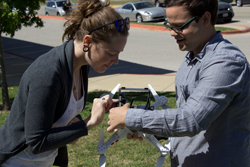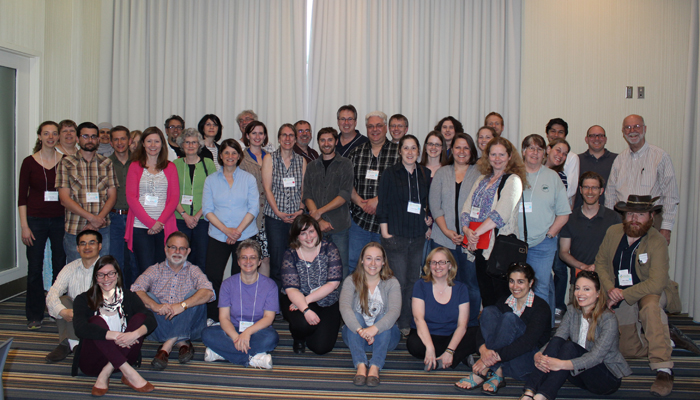There may be no place better than the University of Texas to conduct a broad-based paleo imaging workshop. This certainly seemed the consensus the week of 29 April at the co-sponsored iDigBio and Jackson School of Geosciences imaging event. More than 50 attendees were treated to three days of presentations, demonstrations, and hands-on CT training, all of which were recorded and are now available on the workshop wiki at https://www.idigbio.org/wiki/index.php/Paleo_Imaging_Workshop. Thanks to an outstanding planing team composed of Ann Molineux (University of Texas), Roger Burkhalter (University of Oklahoma), Jessie Maisano (University of Texas), and Aaron Wood (University of Florida), every minute was packed with content. iDigBio extends sincere appreciation to
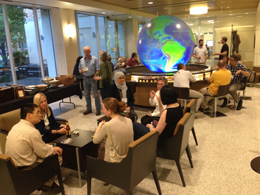 Jackson School dean Sharon Mosher for her hospitality, warm welome to participants, and for affording staff time to arrange numerous details that ensured success. We are especially appreciative of her opening the Jackson School to us for our opening reception and dinner.
Jackson School dean Sharon Mosher for her hospitality, warm welome to participants, and for affording staff time to arrange numerous details that ensured success. We are especially appreciative of her opening the Jackson School to us for our opening reception and dinner.
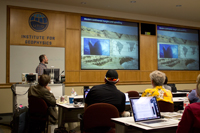 Day 1 of the workshop included presentations from 20 speakers on a wide-ranging array of topics that included 2D and 3D imaging as well as Tim Rowe's introduction to CT scanning technology and its uses for paleontological research. Photogrammetry techniques were highlighted as were reflectance transformation imaging and 3D printing technologies. Uses for each of these technologies for lab and field-based research as well as for education and outreach were emphasized as were strategies for attaching images to database records. We were pleased that Alix Vance, editor GeoScienceWorld, was on hand to orient us to OpenGeoSci, an open platform for geographic data discovery and visualization. Visit the wiki for the full agenda and recordings of the presentations.
Day 1 of the workshop included presentations from 20 speakers on a wide-ranging array of topics that included 2D and 3D imaging as well as Tim Rowe's introduction to CT scanning technology and its uses for paleontological research. Photogrammetry techniques were highlighted as were reflectance transformation imaging and 3D printing technologies. Uses for each of these technologies for lab and field-based research as well as for education and outreach were emphasized as were strategies for attaching images to database records. We were pleased that Alix Vance, editor GeoScienceWorld, was on hand to orient us to OpenGeoSci, an open platform for geographic data discovery and visualization. Visit the wiki for the full agenda and recordings of the presentations.
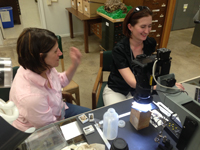
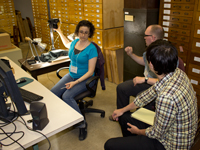
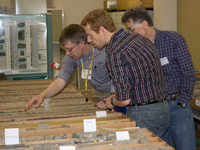
Day 2 offered a fast-track training session on CT scanning led by Jessie Maisano and her staff in the High-resolution X-ray CT Facility at the University of Texas. Participants were asked to contribute samples for scanning prior to the workshop and to briefly explain these samples to workshop participants. Attendees were introduced to a suite of software tools for analyzing and visualizing CT data, with a focus on virtual 3D reconstructions and their use in research. The manual for the CT scanning portion of the workshop is available on the wiki.
Day 3 was devoted to 15 tours and demonstrations ranging from core and SEM imaging to 3D surface scanning, high capacity data storage, various camera configurations, stacking techniques, lightbox and whole-drawer imaging, techniques for attaching images to paleontological database records, and aerial imaging from a quadrocopter.
